6 types of Facebook ads that help attract and return customers

This article describes 6 unusual types of Facebook ads that you need to know to build effective marketing. Read a must.
We continue to publish training materials that will help you in building effective marketing, since marketing is the only thing that you cannot use for us :-).
Sincerely yours, Yambox, complete operator team
( Yambox - we are up to your online store in a computer game)
On Facebook, advertisers have access to more than 1,300 targeting options, 15 campaign types, and more than 1.59 million users. And it is not surprising that the Facebook advertising platform is used by companies of all sizes: from a small family business to the TOP 100a of the largest companies.
A marketer’s dream can be considered fulfilled, because he has access to a huge variety of advertising options, and this opportunity allows one to proceed to more complex and daunting tasks. If you feel overwhelmed and unable to cope with the tasks, just read about the following 6 types of Facebook advertising that you can apply in your own business.
1. Lead generation
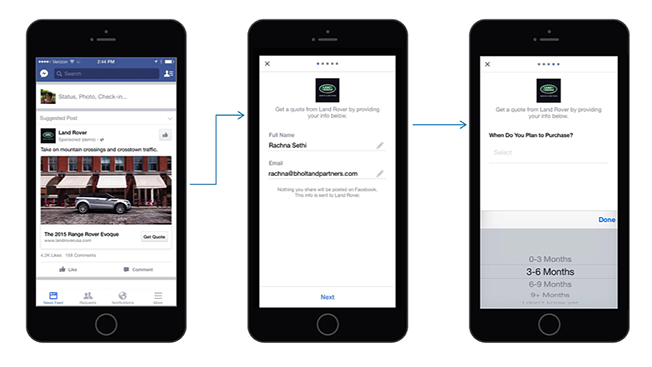
Lead generation makes collecting email addresses and creating mailing lists incredibly easy. With this type of advertising, your potential customers can subscribe to the newsletter, which will require them a minimum of effort, as is required, for example, to repost or like this or that post.
The beauty of this type of advertising is that Facebook itself will automatically fill in most of the fields that users usually have to fill out manually, and this auto-completion will most likely result in the user signing up to your newsletter.
If you want to increase your email list for mailing lists, lead generation is a great option. You can also use Zapier (Zapier is a system platform for transferring data between your favorite web applications using software that supports more than 300 applications.) To connect advertising with your email provider. New contacts will be automatically added to one of your lists and entered into the automated workflow you created.
2. Dynamic advertising
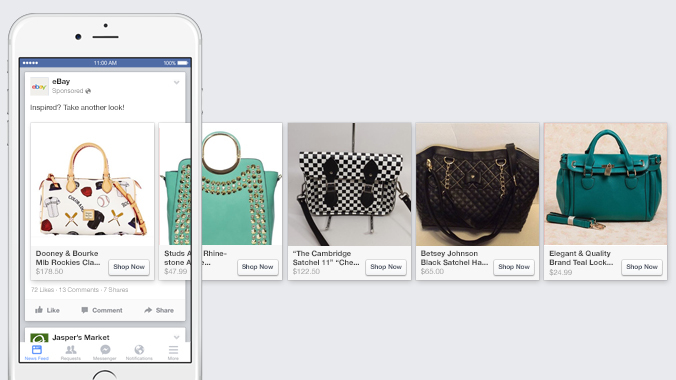
Dynamic advertising is one of the newest and most significant additions to the existing Facebook platform. Big brands, such as Booking.com, using dynamic advertising, begin to see very quickly in this economic effect.
Dynamic advertising works like this; you connect the catalog of your store to an advertising account on Facebook and connect the minimum image. When someone visits your site and then enters Facebook, they will see ads that show the same products they viewed on your site. As a result, the advertising that potential buyers see is incredibly personalized and relevant to them.
Sure, dynamic ads will become your favorite type of advertisements. That's why:
Incredibly personalized
When launching a dynamic ad, its text is the same for everyone who sees the ad, but the creative content is 100% unique and personalized, based on the behavior of every potential customer who views your site.
An indefinite amount of time can be posted on the Internet.
If you launch a large number of advertisements at once, then you understand how much time it takes to update its creative part, but now it's all in the past. With dynamic advertising, you can simply install it once and forget. You can no longer control the work of advertising.
Can achieve multiple goals at once.
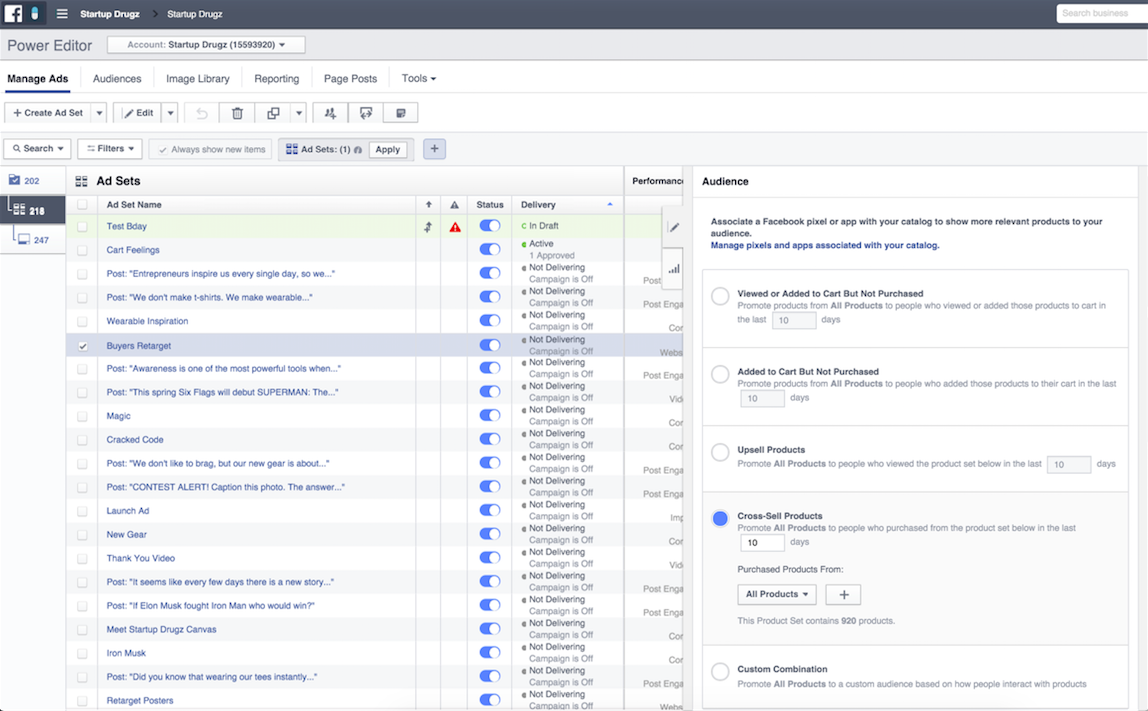
Using dynamic advertising, you can select four different audiences to which you can aim:
• product viewed but not purchased
• added to cart but not purchased
• imposed goods
• related product
Based on the audience you choose, the ad will automatically be optimized for each specific goal. This will save your time and lead to better results.
Great results
Many of Facebook's largest marketing partners see great results when using dynamic advertising. Adphorus, Facebook’s largest marketing partner representing travel brands, saw a threefold increase in conversion and a 65% reduction in cost = bridges for each click on an ad when using dynamic advertising.
It is easy to understand why the economic effect is so high, given that this is the most personalized, targeted and relevant advertising - it’s all about the speed and uniqueness of creating an ad for each Facebook user.
3. Advertising for abandoned baskets
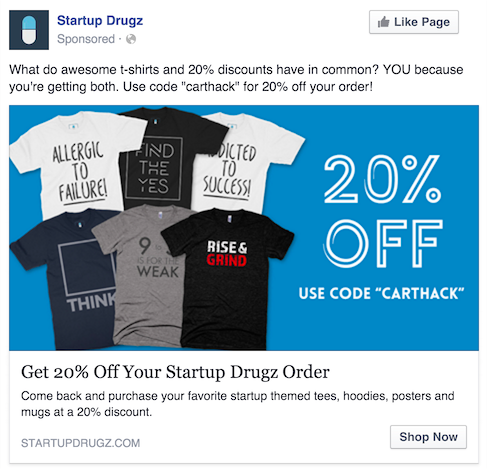
68.63% of buyers leave their cart without buying anything. In other words, for every 10 people who added a product to the cart, there are 7 who, as a result, do not make a purchase.
How to force the buyer to return to the site and still make this purchase?
If you remind you of an unfinished purchase using e-mail, you are only partially right. Unfortunately, only less than 10% of visitors to your website will leave their email address. And this means that you can contact only one of the seven people who left the basket, and you still have 6 hot clients that you cannot contact.
But thanks to retargeting, you can run highly personalized Facebook ads that will target these site visitors. Typically, such ads stimulate the customer by offering a 10% discount or free delivery, provided that the person returns and completes the purchase.
It has been found that using funny and funny videos for this type of advertisements provides even more impressive results.
4. Thank-you advertising
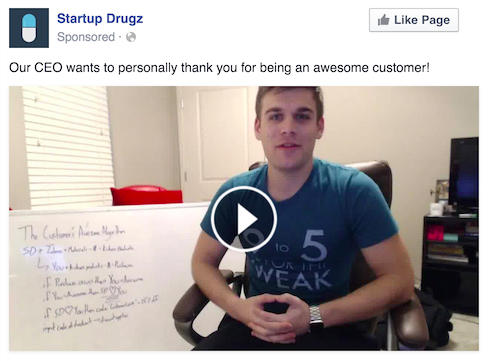
Many business owners have a bad habit of investing all their marketing efforts in targeted leads, that is, in current customers, and stop there! This is a huge mistake. It is much easier to turn a customer who bought into a regular customer for the first time than to turn a cold lead (this is a person who either doesn’t know about you at all, or knows clearly not enough to make a purchasing decision) to turn into a customer in general. In fact, acquiring customers is 6-7 times more expensive than keeping current ones.
That is why many companies have started working on thank-you announcements. Within two days after the purchase, new customers see an advertisement with the participation of the director or the manager of the company; This is a 30 second video where the director thanks customers for their order.
Such advertising has generated much more involvement and coverage of potential buyers for each show than any other advertisement.
The purpose of such an announcement is to build brand loyalty and increase customer satisfaction, but surprisingly, this type of advertising has increased the number of buyers who made their first order, and how to turn them into repeat buyers within two days after the first purchase!
5. Advertising new products
As mentioned in the previous section, business owners often spend enough marketing resources on their existing customers. This is surprising, given that the probability of generating a sale from a new customer is from 5% to 20%, and the probability of accepting a sale from an existing customer is from 60-70%.
Even more surprising is the fact that regular customers spend an average of 33% more than new ones, and 80% of your future profits will come from 20% of your existing customers.
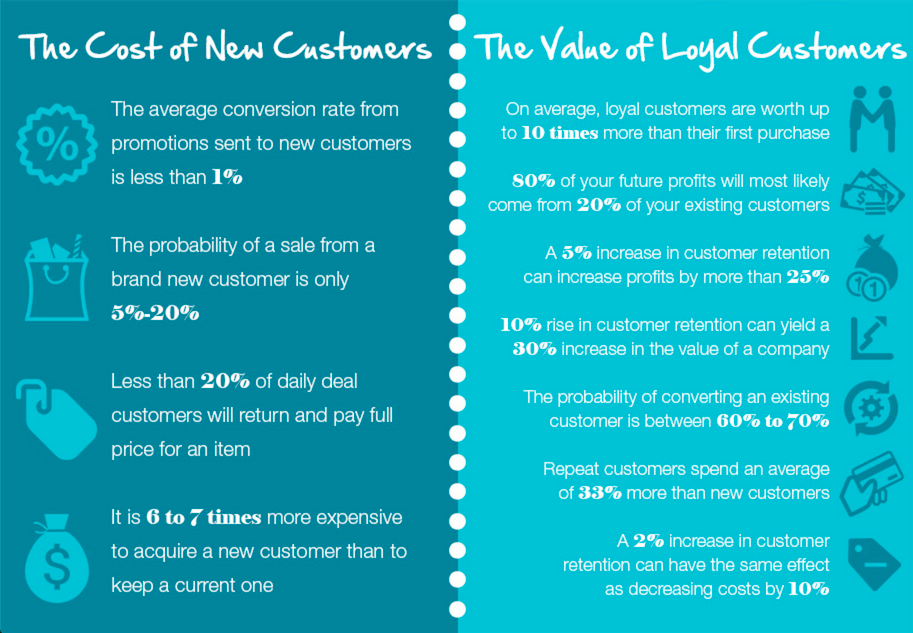
Taking into account the data about repeat customers, it is clear that when a new product appears, the first announcement you launch should be an announcement of a new product aimed at existing customers. Using the text of the advertisement, express gratitude to the client and offer him an exclusive reward. Everyone wants to feel important and valuable.
6. Contextual advertising and traffic generation
Retargeting is a good thing, but as long as you don't attract high-quality traffic to your site, it won't be effective. It is always a good idea to have an advertising campaign on Facebook to attract new potential customers to your store. Let's call this type of ad a “first touch ad”, since this is most likely the very first time that a person who viewed an ad heard about your business.
This type of ad typically has lower CTR (click through rate) and higher CPC (cost per click) than retargeting, because you don’t know much about the people who are viewing your ad. However, there are several ways in which you can reduce costs and improve the performance of “first touch advertising”.
Start with a similar audience.
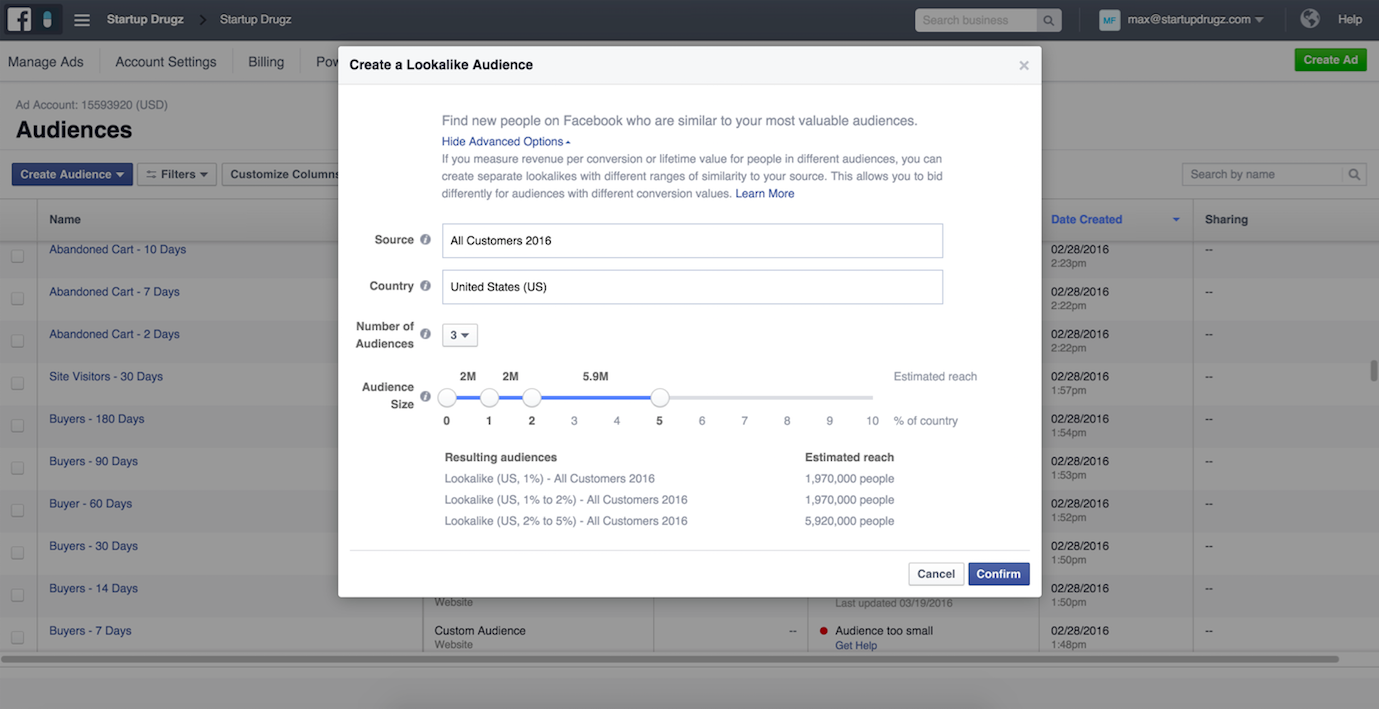
If you have an existing client or a list of potential clients, you can easily import them into the “Ad Manager” as a new user audience. After the audience is ready, you can use it to create a similar number of 2 to 20 million people. This new audience will contain Facebook users that most closely match your existing customers, which makes them more convenient for targeting.
Use Graph Search and Audience Insights tools
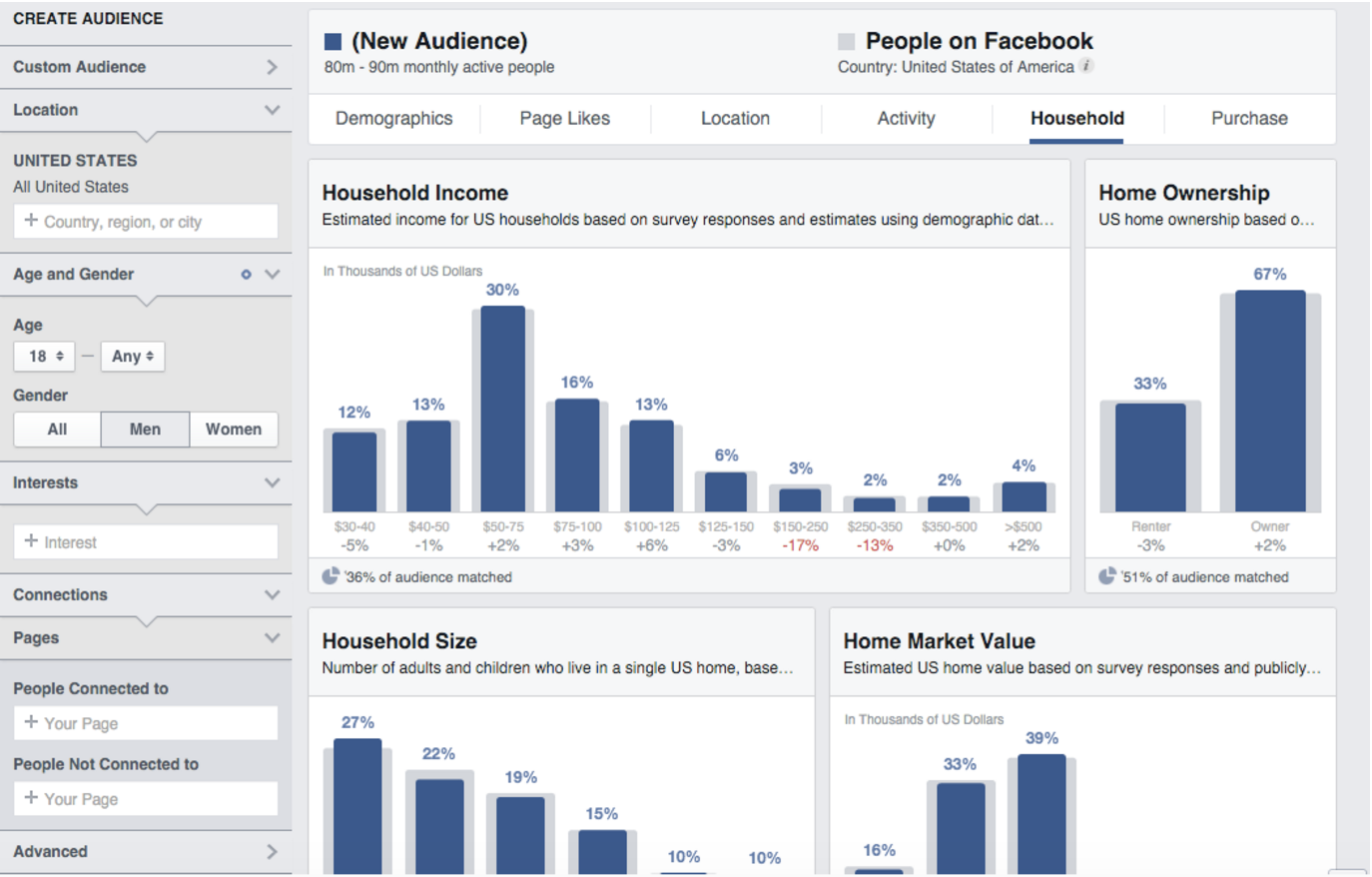
Facebook provides advertisers with a wide range of powerful free tools. The Audience Statistics tool allows you to discover a huge amount of demographic, behavioral, and percentage data for all Facebook users. You can make this data more useful by filtering your search for specific pages, interests, locations, and demographics.
You can learn more about your potential target audience by entering the pages of your competitor in the "Statistics of audiences". This search will provide a huge amount of data on Facebook - users who like your competitors' pages, which you can use by targeting and targeting your first Facebook ads.
A / B Testing
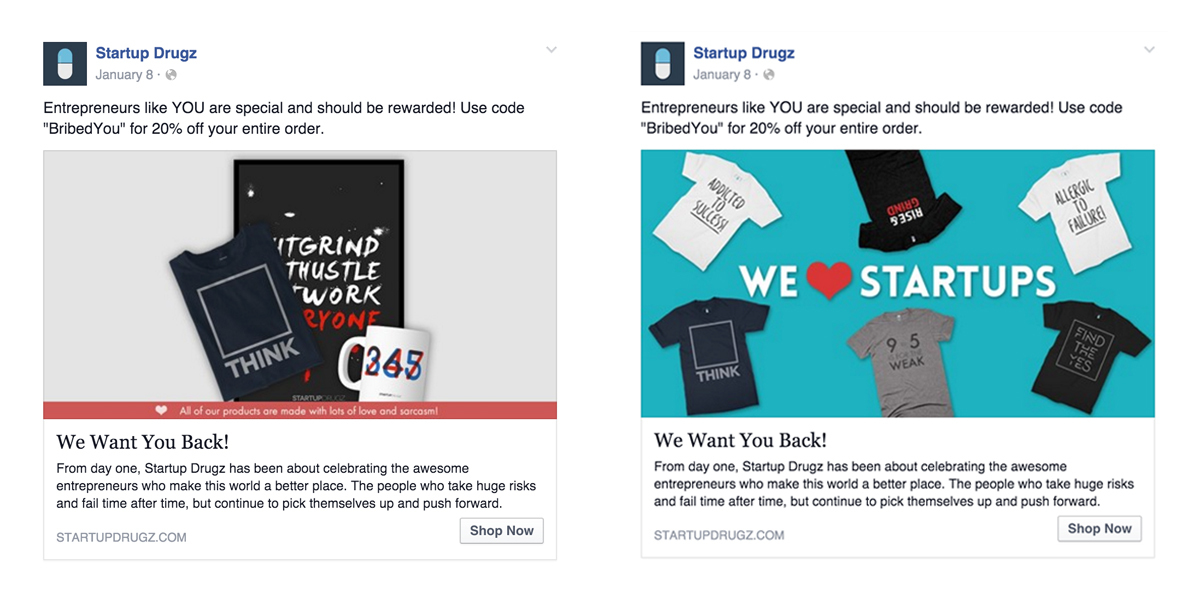
To conduct A / B testing on Facebook advertising is always a good idea, regardless of the type of ad, but it is crucial for “first-touch advertising.” For a new advertising campaign, create 2-3 options for text headers and 2-3 options for design elements. Check out these options in different audiences.
You do not need to spend a lot of money to do it right. You can spend a few dollars a day for each option during the week, and then analyze the results. When analyzing data, you can gradually increase the cost of your most effective versions of texts, design elements and audience.
In order to successfully start working with advertising on Facebook, start small, experiment, evaluate results and iteration. These 6 types of ads mentioned in the article can serve as a basis for building a long-term marketing strategy for your business on Facebook. So proceed!
Subscribe to our blog, there will be a lot of interesting things further.
Sincerely yours, Yambox, complete operator team
( Yambox - turn your online store into a computer game)
')
Source: https://habr.com/ru/post/300356/
All Articles